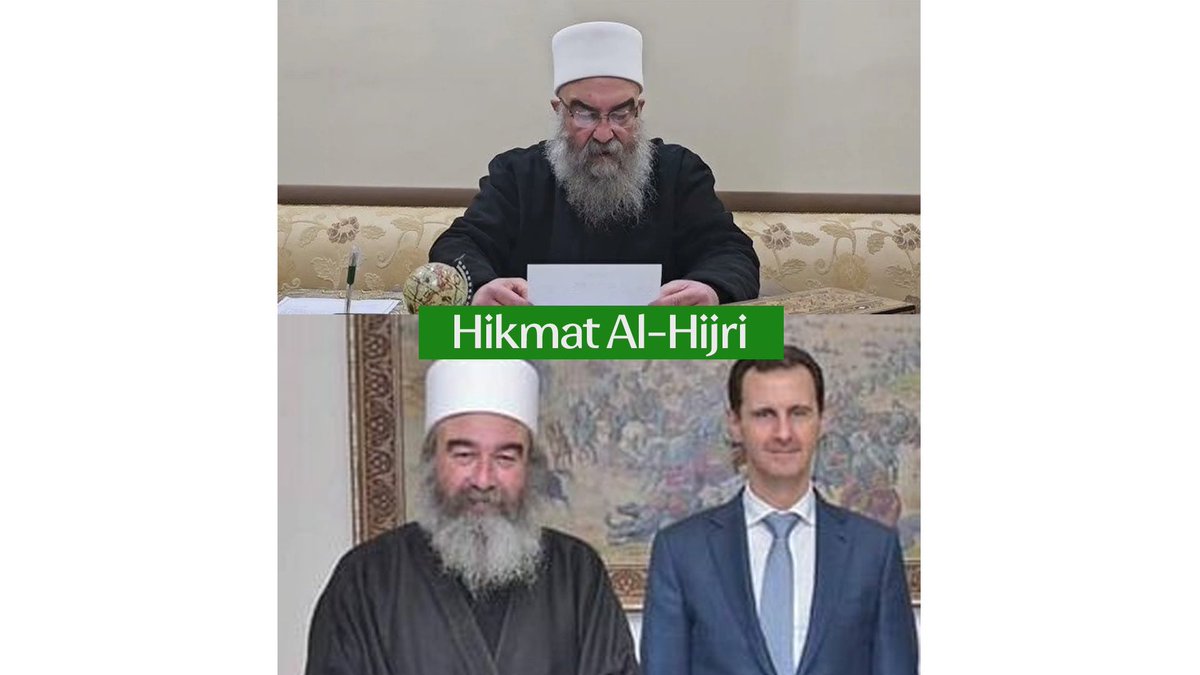🧵JUST IN : The funniest story out of Syria
What’s been happening in Syria over the past few hours? And is it true that Maher al-Assad is back in Syria and HTS has fled?
What’s been happening in Syria over the past few hours? And is it true that Maher al-Assad is back in Syria and HTS has fled?
1- The story started with the return of the award-winning Syrian actor and director, Ghadhfan Ghanoum, to his homeland, Syria.
Ghanoum played the role of Maher al-Assad in the drama series "Smile O General", which portrays the brutality of the Assad regime and the rampant corruption in Syria.
Ghanoum played the role of Maher al-Assad in the drama series "Smile O General", which portrays the brutality of the Assad regime and the rampant corruption in Syria.

2- A fan posted his picture online with a caption saying:
“Maher al-Assad has returned to Syria.”
He wrote that as a joke and for laughs.
“Maher al-Assad has returned to Syria.”
He wrote that as a joke and for laughs.
3- One of Assad’s supporters and a former regime media figure, Omar Rahmon (@Rahmon83) , quickly jumped on the news, thinking it was true. He posted the following tweet:
"The armed factions have withdrawn from the Syrian coast, and Maher al-Assad has returned to Syria under Russian air cover."
"The armed factions have withdrawn from the Syrian coast, and Maher al-Assad has returned to Syria under Russian air cover."

4- Little did he know that the news he shared was just a joke, not a real story or even close to the truth.
This led many Assad supporters and sleeper cells to mobilize armed forces in several areas across Syria.
This led many Assad supporters and sleeper cells to mobilize armed forces in several areas across Syria.
5- Many pro-Assad accounts started sharing the news and began making direct threats against anyone who raised the Syrian revolutionary flag or supported the rebels during the liberation process. 







6- Some couldn’t wait, like one of Assad’s sleeper cells you see in the picture. He grabbed hand grenades and attacked Syrian government security checkpoints, thinking the Assad regime was back and that he was doing something heroic
"it was his time to act"
He was quickly arrested while throwing the grenades, and no one was harmed.
"it was his time to act"
He was quickly arrested while throwing the grenades, and no one was harmed.

7- What started as a joke quickly turned into the biggest uncovering of Assad regime sleeper cells.
They began armed movements and openly fired shots in the streets in celebration, thinking the Assad regime had actually returned to power.
They began armed movements and openly fired shots in the streets in celebration, thinking the Assad regime had actually returned to power.
8- Immediately, Syrian internal security forces stepped in to arrest everyone involved in carrying weapons, shooting, and making threats against the Syrian people. A massive number of security forces were deployed throughout the neighborhoods of Latakia.
9- Citizens took to the streets to show their support for the security forces and the new Syrian administration, fully backing the new security operation that started against the remnants of the Assad regime along the Syrian coast.
They were chanting: "Maher, go to sleep, long live the Syrian General Security!"
They were chanting: "Maher, go to sleep, long live the Syrian General Security!"
10- Another angle of the protests showed people supporting the security forces that started intervening against the remnants of the fallen Assad regime and its sleeper cells along the Syrian coast.
11- One of the reactions from a civilian on the Syrian coast:
"You used to say you didn’t know about the crimes of the Assad regime, so how can you now raise pictures of Maher al-Assad and flags of the old regime? That means you're partners in the crime, just like them. You’re criminals just like the Assad regime. How can you sleep at night after all the atrocities of the Assad regime have been exposed? How can you clap for the fallen Assad regime after all its crimes and horrors have been revealed to everyone? It's because you're just like them... criminals."
"You used to say you didn’t know about the crimes of the Assad regime, so how can you now raise pictures of Maher al-Assad and flags of the old regime? That means you're partners in the crime, just like them. You’re criminals just like the Assad regime. How can you sleep at night after all the atrocities of the Assad regime have been exposed? How can you clap for the fallen Assad regime after all its crimes and horrors have been revealed to everyone? It's because you're just like them... criminals."
12- This is a quick summary of what happened in the past few hours. I’ll keep updating this thread with any new developments as they come in.
13- official: Massive convoys are heading to Latakia to track down the remnants of the fallen Assad regime and maintain public security.
• • •
Missing some Tweet in this thread? You can try to
force a refresh

















